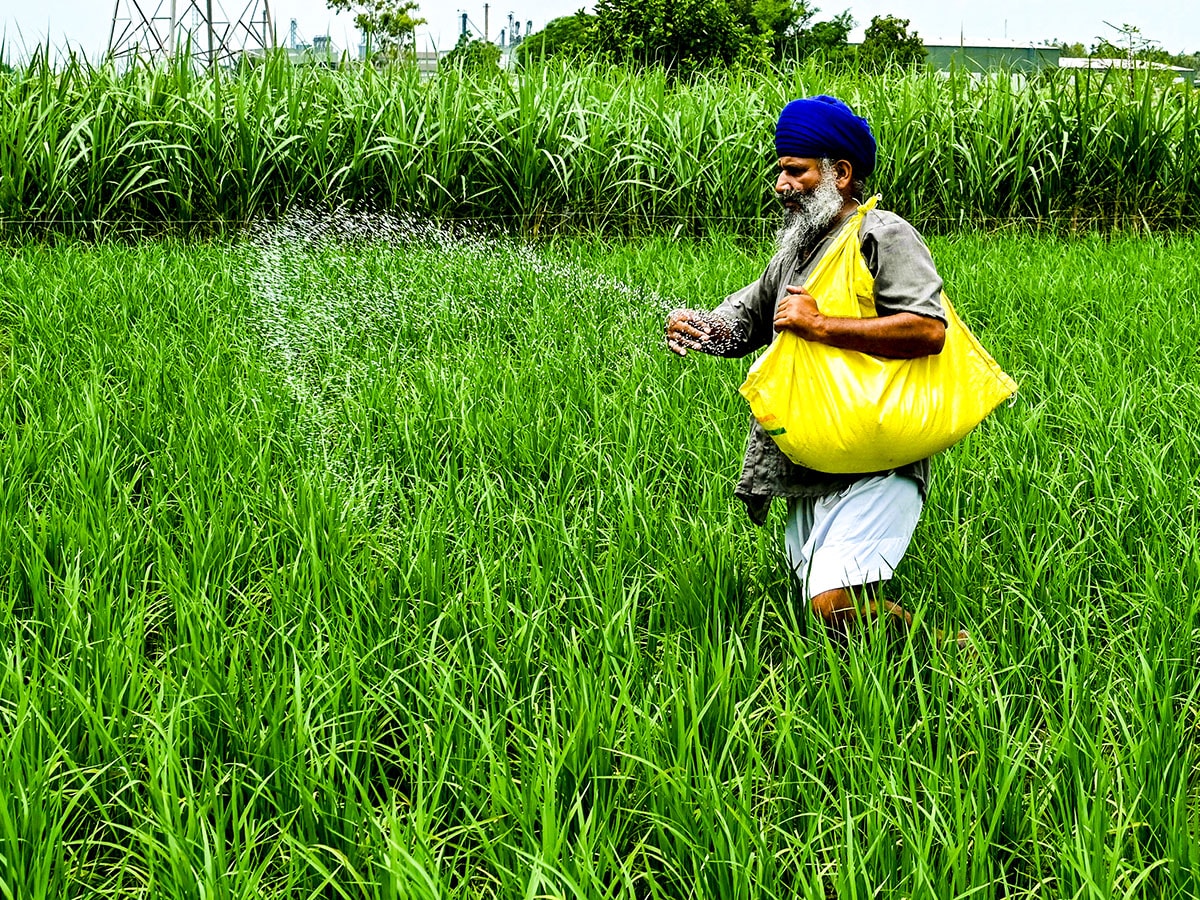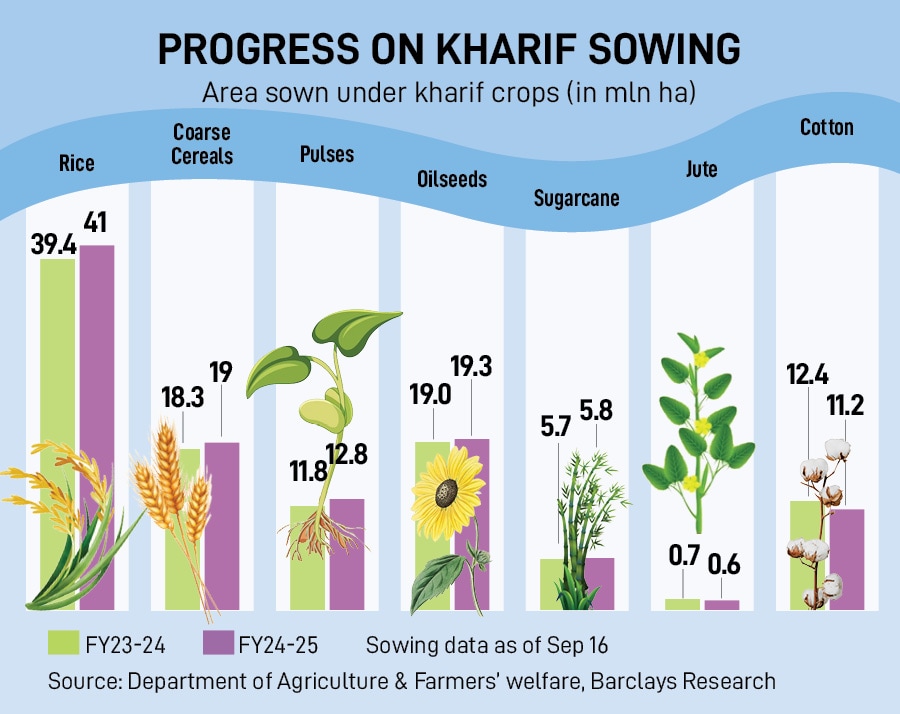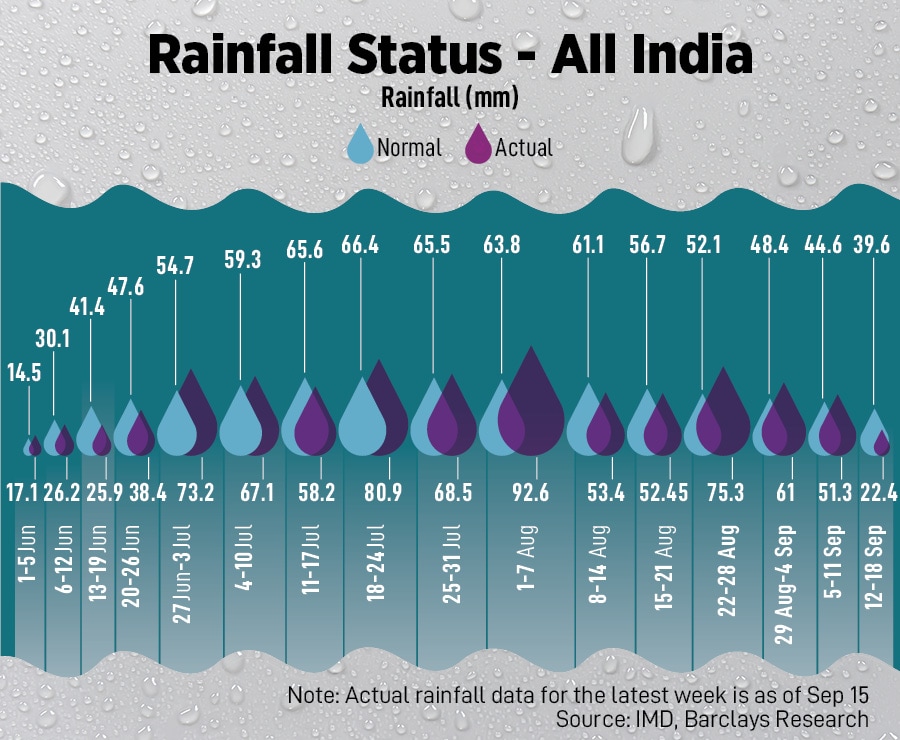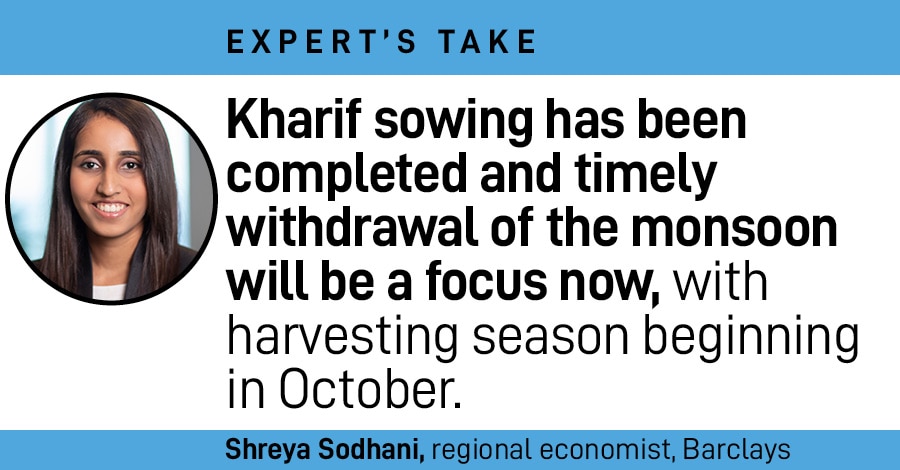Rain Watch for Sept 12-18: Crop damage due to excess water, monsoon withdrawal soon
Timely withdrawal of monsoon is critical now, as harvesting begins in October. Crop loss in Andhra Pradesh and Telangana could be higher due to surplus rains
 Kharif sowing patterns were similar as towards the end of August, given that sowing is complete in 100 percent of normal area.
Image: Narinder Nanu / AFP
Kharif sowing patterns were similar as towards the end of August, given that sowing is complete in 100 percent of normal area.
Image: Narinder Nanu / AFP
Excess rains in the fag end of monsoon season have led to crop damage, with a few states in the Southern region and parts of central India bearing significant losses. Storage levels in water reservoirs have continued to rise while sowing of major crops like rice and coarse cereals was completed last month.
Overall rainfall was 7.7 percent above the long period average (LPA) as of September 15, based on Indian Meteorological Department (IMD) data analysis by Barclays. This compares to rainfall at 7.3 percent LPA in last week. Monsoon rainfall surplus over the past week remained concentrated in states already facing excess rainfall, such as Rajasthan, parts of central region, Andhra Pradesh, and Telangana. 
The agriculture minister stated that crop damage from excess rainfall could be low—in the range of 2-4 percent of overall production. However, according to Barclays, crop loss in Andhra Pradesh and Telangana could be significantly higher, with the ministry currently in the process of assessing the impact in other states, including Maharashtra.
Also read: Rain Watch for Sept 5-11: Crop yields at risk due to heavy showers
The IMD expects weather conditions to become favourable for withdrawal of monsoon in the week starting September 19. Barclays says that timely withdrawal of monsoon would be critical now, as harvesting begins in October.
Kharif sowing patterns were similar as towards the end of August, given that sowing is complete in 100 percent of normal area. As of September 6, the area sown this year is about 2.2 percent higher year-on-year, driven by increases in acreage of rice, coarse cereals, and pulses. 
The states experiencing excess rainfall produce coarse cereals (Rajasthan, Maharashtra, Andhra Pradesh), pulses (Maharashtra) and rice (Andhra Pradesh, Telangana). In the case of rice though, the major producer states of Punjab and Uttar Pradesh have experienced rainfall in the 'normal' range, which may still support production levels this year, says Barclays. 
Meanwhile, reservoir storage increased to 85 percent of total capacity as of September 12. This translates into 129 percent of the live storage level of the year-earlier period and 118 percent of normal storage.














